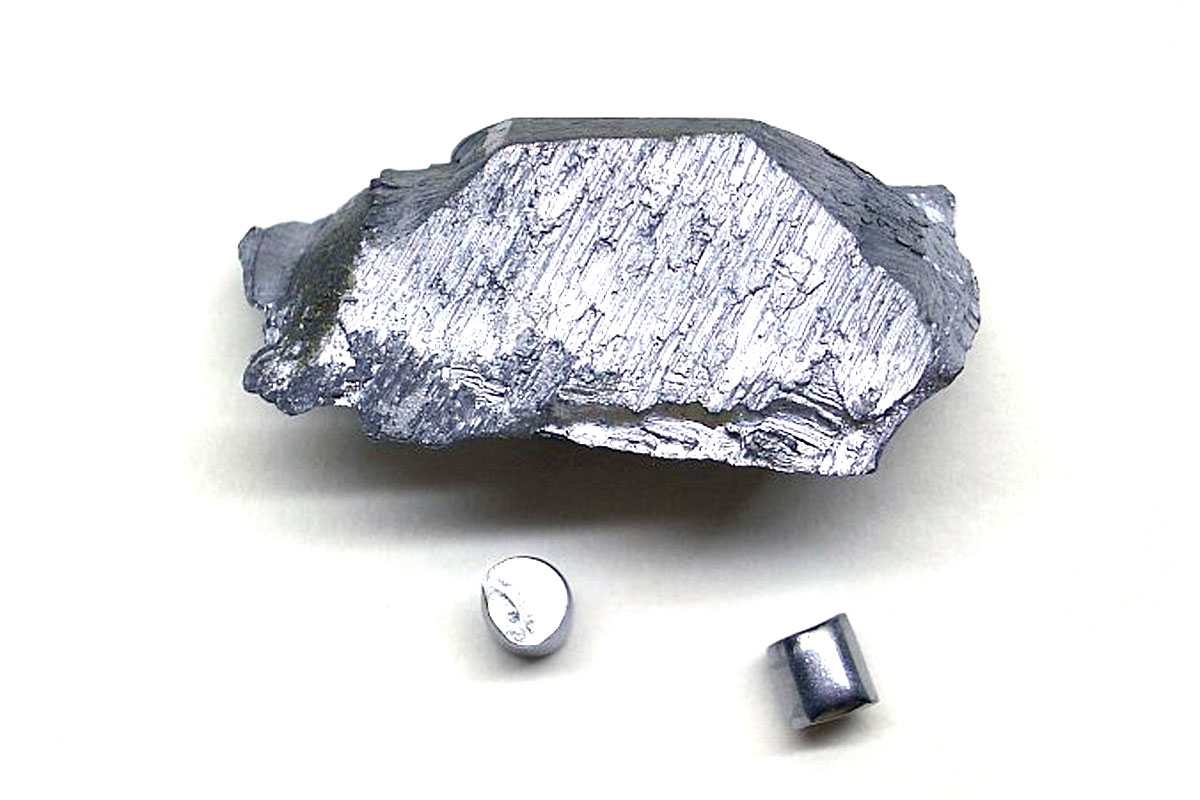Vanadium is an element, and it has an atomic weight of 50.9415. Vanadium sits in the periodic table between titanium and chromium – atomic number 23.
First discovery of vanadium
In 1801, the Spanish-born naturalist, engineer and scientist, Andres Manuel del Rio was the first person to discover vanadium. He found the element while he was examining a common ore containing lead in Mexico. He thought it was a similar metal to chromium and he named his discovery ‘panchromium’, then later renamed it ‘erythronium’.
It must be said, however, that Señor Del Rio was not the luckiest scientist in the world. On discovering the metal, he shipped off a sample to the Institute of France in Paris for analysis and confirmation of his find. On the journey to France the ship sank, and with that ship, Del Rio’s hopes of fame and fortune sank too.

Pieces of vanadium (v) – chemical element 23 in the periodic table. It was discovered in 1801 by Andres Manuel del Rio but not verified until 30 years later.
Del Rio’s discovery of vanadium was confirmed 30 years later by the Swedish chemist, Nils Gabriel Sefstorm. Sefstorm rediscovered the metal in a sample of cast iron produced in the small town of Smaland in Sweden.
Sefstorm had been requested to analyse samples of cast iron from a local mine. The local miners sometimes found their cast iron was strong and flexible, and other times the cast iron was weak and brittle. No one could understand why.
Sefstorm discovered that the reason for the stronger and more flexible cast iron was naturally occurring vanadium accidentally being added to the smelting process. Sefstorm wasted no time at all naming the new metal, ‘vanadium’, after the Scandinavian goddess of beauty, Vanadis. Sefstorm’s name for the metal was made official despite suggestions it should be named, ‘rionium’ after del Rio.
The importance of vanadium
It cannot be expressed how vital vanadium is to the industrial age, especially in mass production processes involving steel. Henry Ford loved vanadium as it gave him the ability to produce cheap, flexible and robust steel which he used to make mechanical parts for his cars.
The Ford Model T was the iconic product that helped the car industry to cement mass production as its standard form of producing cars the world over. This pillar of mass production was introduced to the public in 1908 and over 15 million Model T’s were produced until production ceased in 1927. All of them relied heavily on the use of vanadium steel.

The Ford Model T, first manufactured in 1908. Many mechanical components were made from vanadium steel valued by Henry Ford for its strength and flexibility.
In the steel industry, manufacturers have discovered that by adding only two pounds of vanadium to one ton of steel (about 0.1%) will double the strength of the steel. This addition allows cheaper, durable and lightweight steels to be produced that are also highly resistant to corrosion.
Vanadium also has important applications in the rechargeable battery and power storage industries.
World production of vanadium
The world’s production of vanadium is small, about 87,000 tons per annum, and not enough to meet demand. China alone needs more than that every year to complete its infrastructure projects. The USA only produces the metal from scrap material found in catalytic converters and other industrial scraps; they have to import the rest.
Vanadium is the type of resource that wars are fought over. Production is heavily concentrated in China, Russia and South Africa who account for approximately 90% of the world’s supply. It has not helped that China has now banned the export of scrap containing vanadium.

Fisch – 5mm Chrome-Vanadium Steel Brad Point Drill Bit by Woodcraft. Tools and tool parts are typically hardened using small amounts of vanadium. Here, the chrome vanadium steel construction with ground center point prevents the drill bit from walking across the material surface.
Stainless steels that need to be hardened contain small amounts of vanadium. It allows manufacturers to produce stronger stainless steel of the type we use here at Double Stone Steel in our PVD production process.